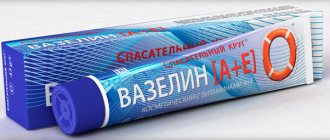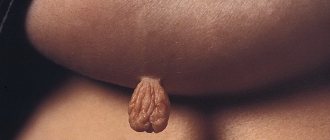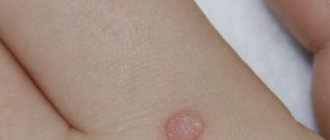Wart removal
/text/klinika-dermatologii/udalenie-borodavok/ 150 5000 RUB https://schema.org/InStock
Warts are a benign skin disease that manifests itself as small tumor-like formations. They may not look quite aesthetically pleasing, which is why a person’s desire to get rid of them is quite understandable. Some, such as plantar splints, can be very painful and make everyday life difficult. Their occurrence is, first of all, a serious signal about problems with the immune system. Therefore, along with the removal of warts and papillomas, you need to think about improving the quality of your life.
Causes
HPV (human papillomavirus) is to blame for the occurrence of warts. It can be transmitted through personal contact through contact with a carrier of the virus; sometimes a single handshake may be enough. The infection can also often be acquired in public places (for example, a swimming pool, gym, sauna). Other risk factors include: working with toxic substances, stress and constant negative emotions, microtrauma, excessive sweating.
Advantages and disadvantages of the method
Cryodestruction, like any other method of minimally invasive treatment of skin tumors, has its advantages and disadvantages. Removal of warts and moles with liquid nitrogen can only be carried out in a medical facility. If the method is used incorrectly, the risk of scarring and other dangerous complications increases.
The main advantages of removing tumors with liquid nitrogen:
- high efficiency;
- the ability to burn with liquid nitrogen repeatedly;
- no bleeding;
- low risk of complications;
- no need to use anesthesia.
It is most effective to burn out warts and papillomas with liquid nitrogen when there are a limited number of tumors, when they have not reached a large size and do not disrupt the blood circulation and nutrition of surrounding tissues.
Cryodestruction of moles, warts and papillomas also has its disadvantages:
- inability to conduct further histological examination and assess the nature of the tumor;
- the need for repeated sessions, especially with large tumors;
- maintaining the risk of scarring.
The high level of professionalism of the specialists at the Healthy Family clinic, which is located in Moscow, helps to minimize the disadvantages and risks of the procedure. We maintain maximum comfort of service so that every patient feels safe during diagnosis and treatment.
Ways to remove warts
Often the patient ends up seeing a dermatologist after using folk remedies that did not produce results. In fact, you shouldn’t even start such therapy, because it can lead to active reproduction and malignancy of the formations. Our center uses the following methods of professional removal of warts, papillomas, and moles:
- Cryotherapy (liquid nitrogen);
- Radio wave method (using Surgitron or Fotek devices).
Acne treatment.
Cryotherapy with liquid nitrogen gives good results
in cases of various forms of acne and oily seborrhea of the face in combination with general treatment methods. The use of liquid nitrogen is especially indicated for severe and widespread forms of acne (phlegmonous, spherical, keloid acne). In this case, liquid nitrogen is used in the form of extinguishing and deep freezing of inflammatory infiltrates.
Shading is carried out with a large-diameter applicator, for which a cotton swab 7-10 cm long (in the form of a “reed”) is tightly fixed to the end of a wooden stick. The applicator is moistened with liquid nitrogen
, positioned parallel to the surface of the treated area and with continuous rotational movements, under light pressure of the right hand, move over the affected surface until a quickly disappearing whitening of the skin appears. The patient feels a feeling of cold and burning.
After the burning sensation disappears, the procedure is repeated 2-3 times for 5-10 minutes. After 5-6 hours, persistent hyperemia of the skin appears, which lasts 24-36 hours, and then the skin gradually darkens, on the 3rd day lamellar peeling appears, and after 5-6 days the darkened layers of the epidermis are completely rejected.
Individual large inflammatory infiltrates of acne, suppurating atheromas and hypertrophic scars are additionally treated with liquid nitrogen
for the purpose of deeper freezing.
On lesions that have undergone additional application, blisters often form, followed by the formation of crusts, which are rejected after 8-10 days. Subsequently, treatment sessions are carried out 2 times a week with less exposure, causing weaker phenomena of reactive inflammation of the skin. 10-15 procedures are prescribed per course. In the process of treating acne, oily seborrhea of the face with liquid nitrogen
The patient is prescribed at home to wipe the skin with 2% salicylic alcohol and dust the areas of peeling with talcum powder. Along with this, general treatment methods are also carried out: immunotherapy, oral administration of a complex of vitamins, sulfur preparations, antibiotics, etc.
When treating rosacea, cryomassage with liquid nitrogen
carry out lighter movements over the entire affected surface of the facial skin. Individual nodular and pustular elements are additionally frozen with a short-term exposure of up to 10-15 seconds. Sessions are repeated 1-2 times a week; the course requires 10-15 procedures, depending on the extent of the process. Facial skin care during treatment consists of wiping it with disinfectant lotions.
Removing warts with liquid nitrogen
The method of removing warts with liquid nitrogen is now considered the most popular and effective treatment method. The procedure is practically painless, there is no contact with blood, which prevents the spread of infection, and no scars remain. Its essence is that unwanted formations on the skin are frozen during the evaporation of liquid nitrogen and die. Impact doses of cold are a very effective prevention of infection. In addition, this method is the most preferred for removing plantar warts.
Liquid nitrogen - good or bad for our skin?
In modern medicine, the procedure for removing various skin formations using LIQUID NITROGEN, the so-called CRYODESTRATION or tissue freezing, has become widespread.
The essence of the procedure is as follows: liquid nitrogen is applied to the formation using a special cotton swab or an aerosol jet. The whole procedure takes from 1 to 3 minutes. The tissues are frozen to temperatures of -190 °C, the treated area turns white, hardens and loses sensitivity, the blood supply is disrupted, the tissues of the area are damaged, and then regenerate over the next 3–6 weeks.
Impact on the wart with a special “reed” with liquid nitrogen
Freezing a wart with liquid nitrogen, as seen in the first seconds after the procedure
The advantages of this method are quite prosaic:
- accessible procedure, low cost,
- no stitches or dressing changes required,
- fast and virtually painless,
- no special instruments or sterilization are required.
But there are also disadvantages :
It is impossible to remove the formation so that it is possible to obtain a section of skin for histological examination. At the time of treatment, we cannot know how deeply the tissues have frozen, so the formation may not go away, in which case a repeat procedure will be necessary. But there is also “the other end of the stick”: with excessive contact of nitrogen with the skin during the procedure, there is a very high risk of getting a cold “burn”, which is accompanied by the appearance of a painful bubble at the site of exposure (in some cases it may contain blood), and it is necessary will then be opened, leaving the tire behind. The process is not for the faint of heart, not for everyone.
I am sure that whoever experienced this method on himself, endured this pain during healing, and as a result did not get the expected result - the formation did not go away or recurred, will never (if it is possible to use other, more advanced and controlled methods of removal, even more expensive ) will not recommend him to friends.
To be honest, I think this method has already become obsolete, despite its widespread use, it is not that good. After several unsuccessful attempts to use it, most patients still come to us for laser removal, with already grown disturbing huge and permanent formations, a widespread warty process, ring-shaped warts (when they were cauterized in the center, but remained on the sides, because the papilloma virus is aggressive responds with aggression, therefore actively thickens the thickness of this ring).
When I do not recommend using cryodestruction:
- To remove bulky skin formations (such as keratomas, papillomas, fibroids...), as a rule, the discomfort associated with healing after the procedure is enormous, and the formations “sat” in their places and remain, they do not go anywhere even after healing, but the surrounding the skin takes a long time to recover. Believe me, it is much easier to remove with a laser, everything is removed for sure and immediately, nothing remains on the skin except the wound, there will be no painful hemorrhagic blisters, the healing process will be minimal in duration, the inflammation of the wound is much less pronounced and goes away very quickly.
- This method is strictly prohibited for removing pigmented skin tumors (nevi), since partial freezing can lead to their malignancy.
In what cases should you try cryotherapy:
- For viral warts (especially plantar warts). In order for a wart to go away, it is enough to create extreme conditions for the skin on which it is located, to give it, so to speak, stress. Liquid nitrogen will help us! In response to freezing, the body increases its antiviral defenses, and the wart resolves itself without any scarring. That is, for this you do not need to burn it out completely, as is the case with the above formations (keratomas, papillomas, etc.), only a small impact is enough. To increase the effectiveness of this procedure, I recommend preparing the wart in advance by reducing its thickness using baths and cleaning its surface. I’ll say right away that this method is not effective for all patients; for some, the immune system is activated, and for others it is not.
- Well, when I am FOR liquid nitrogen, it is its use in cryomassage procedures, cryopilling, in cryosaunas - these are really cool worthwhile procedures that affect the tone of our blood vessels and the body, improving the quality of the skin, by normalizing and improving blood supply, nourishing the skin, but their benefits for us are not limited to this... But this is a separate topic for conversation, I will write about this later. . .
Cryomassage
In the cryosauna
In the cryosauna
So, it’s up to you to choose the cryotherapy method for removing formations or any other!
Take care of yourself! Health is our greatest value.
Be healthy and happy!
Oncodermatologist Olga Nikolaevna Vyshar.
Useful article? Repost on your social network:
Care after removal
After exposure to liquid nitrogen, scars take one to two weeks to heal. It depends on the individual characteristics of the body and the degree of damage. If your doctor prescribes you to take any medications, you should take a course. The bubble that appears on the skin at the site of the session should not be wetted, punctured, and should not be touched at all. Sometimes treatment with potassium permanganate is required for some time after the procedure. The specialist will tell you about this in more detail at your appointment.
Treatment of some forms of alopecia.
In case of oily seborrhea of the scalp with hair behavior phenomena, as well as in cases of alopecia alopecia, liquid nitrogen has a beneficial effect, subject to the simultaneous use of general methods of influencing the body as a whole (restorative treatment, vitamin therapy, etc.). Liquid nitrogen in these cases is used in the form of a scalp massage. In this case, the applicator is placed parallel to the surface of the skin and with light rotational movements the scalp is massaged down the partings. The duration of treatment of each area is 3-5 seconds until a small skin settlement; at the end of the cryomassage, persistent erythema appears. The procedure takes on average 10-20 minutes (cryomassage of the entire scalp).
With nesting baldness
Only the area of baldness is treated with liquid nitrogen intermittently for 1-2 minutes. The procedure is repeated after 2-3 days, the course requires 15-20 procedures. After a month of break, the course of treatment must be repeated. In total, patients receive 2-3 courses. It should be remembered that the low temperature of liquid nitrogen causes dryness and brittle hair, so during the treatment you should carefully monitor the condition of sebum secretion. In addition, when performing cryotherapy with liquid nitrogen, it is necessary to take into account the general condition of the patient. Hypertension, epilepsy, vasospasms are contraindications for cryotherapy on the scalp, face, etc.
The liquid nitrogen treatment method is simple, accessible and can be successfully used in cosmetic and dermatological institutions. The great advantage of the method is that liquid nitrogen does not cause the formation of keloid scars, is low in pain, and has high therapeutic efficacy.
Inhaled nitric oxide (NO) has a selective vasodilating effect on pulmonary vessels without causing systemic effects on hemodynamics. By reducing vascular resistance in ventilated areas of the lung, NO improves the ventilation-perfusion ratio and may increase systemic oxygenation. NO has been used for decades in the treatment of patients with pulmonary hypertension, acute respiratory distress syndrome (ARDS), and right ventricular failure after cardiac surgery or lung transplantation. NO is used as a rescue measure in extreme hypoxia, to reduce the need for ECMO, and to optimize mechanical ventilation in ARDS. The Medscape news resource published an interview with Lorenzo Berra, medical director of respiratory support at Massachusetts General Hospital, who also conducts research in anesthesiology at Harvard Medical School, on the possible role of NO in the treatment of COVID-19. The interview covers two issues in some detail - ongoing clinical research in this area, as well as practical aspects of the off-label use of NO in real clinical practice in patients with coronavirus infection.
In addition to its vasodilating effect, NO has a number of properties that are valuable in the treatment of patients with COVID-19: it is a bronchodilator, has an anti-inflammatory effect, and also reduces platelet aggregation, which reduces the likelihood of thrombosis. Finally, Dr. Berra's group examines the hypothesis that NO is virucidal. They rely on some of the research that was done on SARS. Thus, it has been shown that the use of NO inhalation in patients with ARDS significantly accelerates the improvement of the X-ray picture, which cannot be associated only with an improvement in oxygenation (https://www.medscape.com/viewarticle/478772). Another study showed that in vitro NO has an inhibitory effect on the SARS-CoV virus (https://pubmed.ncbi.nlm.nih.gov/15234326/). A similar study is currently being conducted regarding the SARS-CoV2 virus. Given the supposed virucidal effect, studies are currently being conducted on the use of NO not only in severe patients with ARDS, but also in moderate patients (not on mechanical ventilation). In addition, a study is being conducted with the participation of medical personnel, which evaluates the preventive effectiveness of NO against the development of coronavirus infection: volunteers are given inhalations for 10 minutes at the beginning and end of the work shift.
A vasodilating effect with improved oxygenation can be achieved using a small dose of NO - starting from 20-40 ppm. However, it is suggested that a virucidal effect can be achieved using high doses of NO (doses up to 250 ppm are currently being tested in clinical studies). A limitation for the use of NO is the low LV ejection fraction, especially in the case of acute left ventricular failure with pulmonary edema. Dr. Berra points out that the use of NO requires monitoring of nitrogen dioxide levels, methemoglobin, and renal function. Patients can safely receive this therapy for weeks, however, against this background, the activity of their own NO synthase is inhibited, so to avoid the withdrawal effect, therapy should be discontinued gradually.
Based on materials:
Can Nitric Oxide Prevent COVID-19 Infection or Progression? — Medscape — May 26, 2020
https://www.medscape.com/
Text: Shakhmatova O.O.











